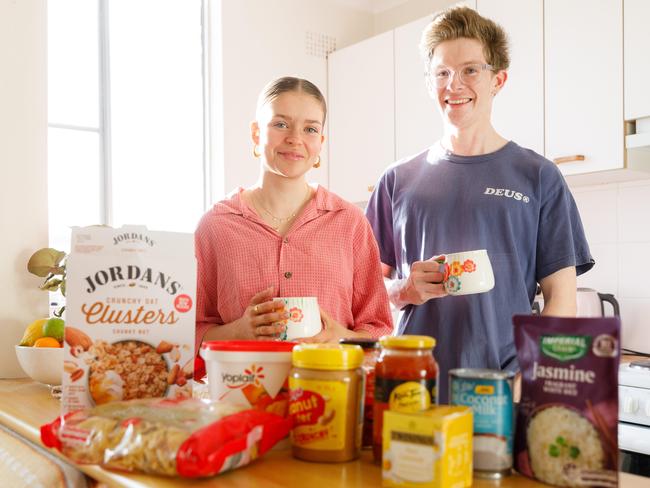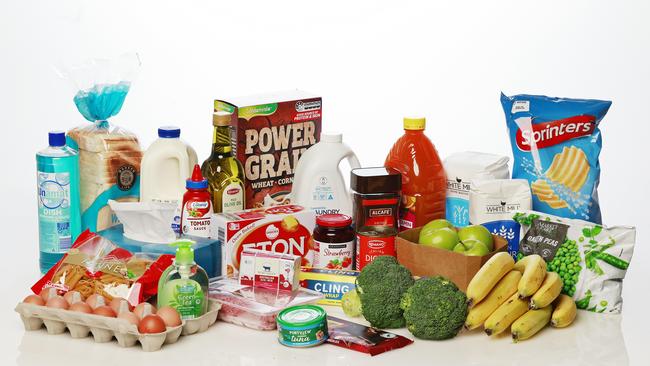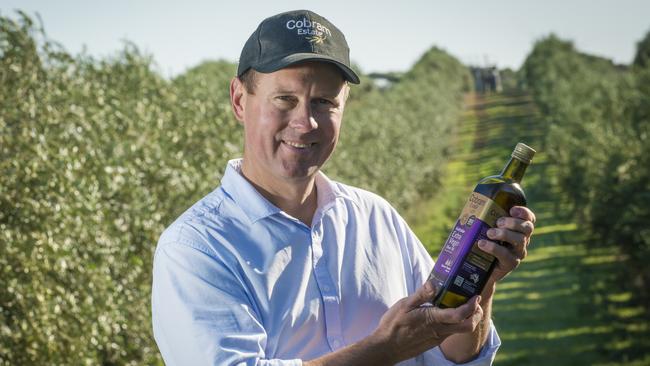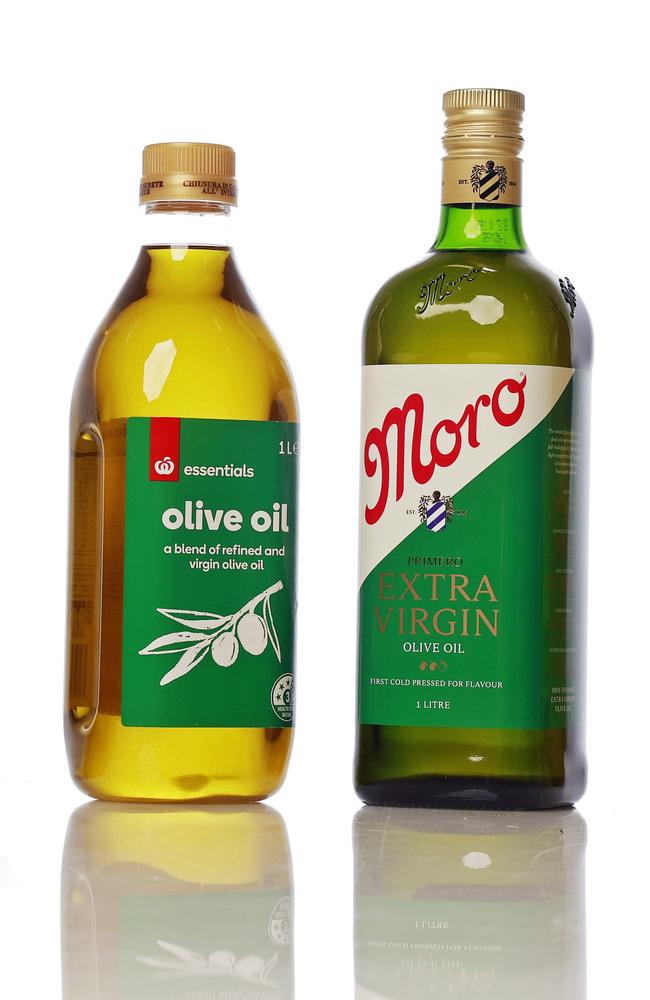Struggling households dealt fresh blows at the supermarket checkout
A special investigation has shown the most basic groceries have surged in cost in a further hit to households on the tightest of budgets. Find out how the prices have changed here.

NSW
Don't miss out on the headlines from NSW. Followed categories will be added to My News.
A basket of the most basic groceries has surged in cost by 14 per cent since last year in a further hit to households on the tightest of budgets.
The findings emerge from exclusive research by The Daily Telegraph which also reveals that a supermarket shop is now about one-third dearer than in 2021.
The product blowing out bills more than any other at the moment is olive oil.
But even if that effect is removed entirely, groceries are six to seven per cent pricier than in May 2023.
For a family spending about $300 a week at the supermarket checkout, an increase of that scale ends up adds about $1000 a year to grocery expenses — money that is now all the harder to find given skyrocketing costs for housing, insurance and petrol.

To limit the financial pain of filling the fridge, pantry and laundry, experts say many consumers must completely overhaul their attitude to buying groceries.
“Most of us view our visits to the supermarket as a chore rather than an enjoyable activity so we form habits to help us get through it as quickly as possible,” said Choice editorial director Mark Serrels.
“Unfortunately, that can mean you’re rushing through the trip and, as a result, spending more than you need to.”
Mr Serrels said that by using unit pricing information on shelves it was possible to pick the best value item.
“We found in a recent comparison of loose versus packaged products such as fruit and vegetables, you could save up to $1900 a year by picking the format that was cheapest,” he said.
Choice was recently contracted by the federal government to start providing quarterly reports on grocery prices.
It has only produced one report to date, so the group does not have data on the pace of increases.
However, The Telegraph does.
Compared to 2021, a basket of basic groceries containing items from every aisle has risen by 30 to 35 per cent, depending on the supermarket.
In that time some of the heftier hikes have been in the cost of bread, cereal, eggs, chocolate, chips and canned tomatoes.

Recently, nothing has increased as markedly as olive oil.
Supply shortages in Europe and Australia have caused prices to rise by 50 to 78 per cent since last year.
The chairman of the number one brand, Rob McGavin of Cobram Estate, told The Telegraph that there would be relief — but it would take the better part of 12 months to arrive (see separate story for more).
Supermarket chains acknowledged soaring costs were hurting.
An Aldi spokeswoman said: “While we do acknowledge some grocery items have increased in price, we want to reinforce our commitment to customers that we will maintain our price leadership.”
A Woolworths spokeswoman said: “As we work to manage ongoing economy-wide inflation, we remain focused on delivering lower prices where we can, and helping our customers’ budgets go further with thousands of specials every week.”

The Telegraph’s analysis of budget labels shows prices are rising faster than the overall rate of inflation, which economists estimate was slightly less than four per cent in the year to the end of June.
A Coles spokeswoman said: “A key driver of supermarket price increases has been cost price increase requests from our suppliers. We continue to invest in providing value through everyday trusted pricing, weekly specials, Flybuys and our increasingly popular own-brand products.”
Many shoppers have already shifted some if not all of their supermarket spend to private labels in a bid to contain costs.
Choice’s Mr Serrels encouraged people who hadn’t previously considered house brands to do so now.
“We regularly compare food and cleaning products and often find that house-brand products outperform more expensive national brand items,” he said.
“However, the important caveat here is that the results aren’t consistent. While one product in a supermarket’s range might do well, another might perform abysmally, so you need to pay attention to specific results.”
Choice provides all its cleaning and food tests free of charge on its website.
The cost of a basket of the cheapest groceries — Aldi basics — has increased by 13.9 per cent since May 2023. Woolies’ and Coles’ budget lines rose by similar amounts, The Telegraph’s checks found.
PRICE OF OLIVE OIL NOW VIRGIN ON RIDICULOUS
Olive oil is good for your health but unfortunately it has become bad for your budget.
The price of this already-expensive pantry staple is now costing an extra 78 per cent in some cases when compared to last year, checks by The Daily Telegraph show.
A one-litre bottle of olive oil is as much as $9 more expensive than last year.
The cause of the increase has been a supply shortage following drought in the northern hemisphere and below-average crops in Australia.
About half of the oil bought domestically is local, the remainder is from Europe.

There will be relief after a better season in Spain, but it will take as much as a year to flow through to prices on the shelves here. Mr McGavin, said it had experienced three years of below-average harvests.
But its annual running costs were rising.
“So our cost of production per litre has gone up a lot,” Mr McGavin said.
“At the same time, Europe has had absolutely shocking crops.”
In February, Cobram Estate raised prices by 25 per cent.
Market prices “will come down, there’s no doubt about it,” Mr McGavin said.
“It’s like bananas after a cyclone, but a little bit slower.”
Savvy shoppers can save by purchasing olive oil when it is discounted. Prices sometimes drop by as much as 40 per cent.
Consumers who can no longer stomach the cost can consider cheaper alternatives such as canola oil for frying and sunflower oil for dressings.
Do you have a story for The Daily Telegraph? Message 0481 056 618 or email tips@dailytelegraph.com.au



